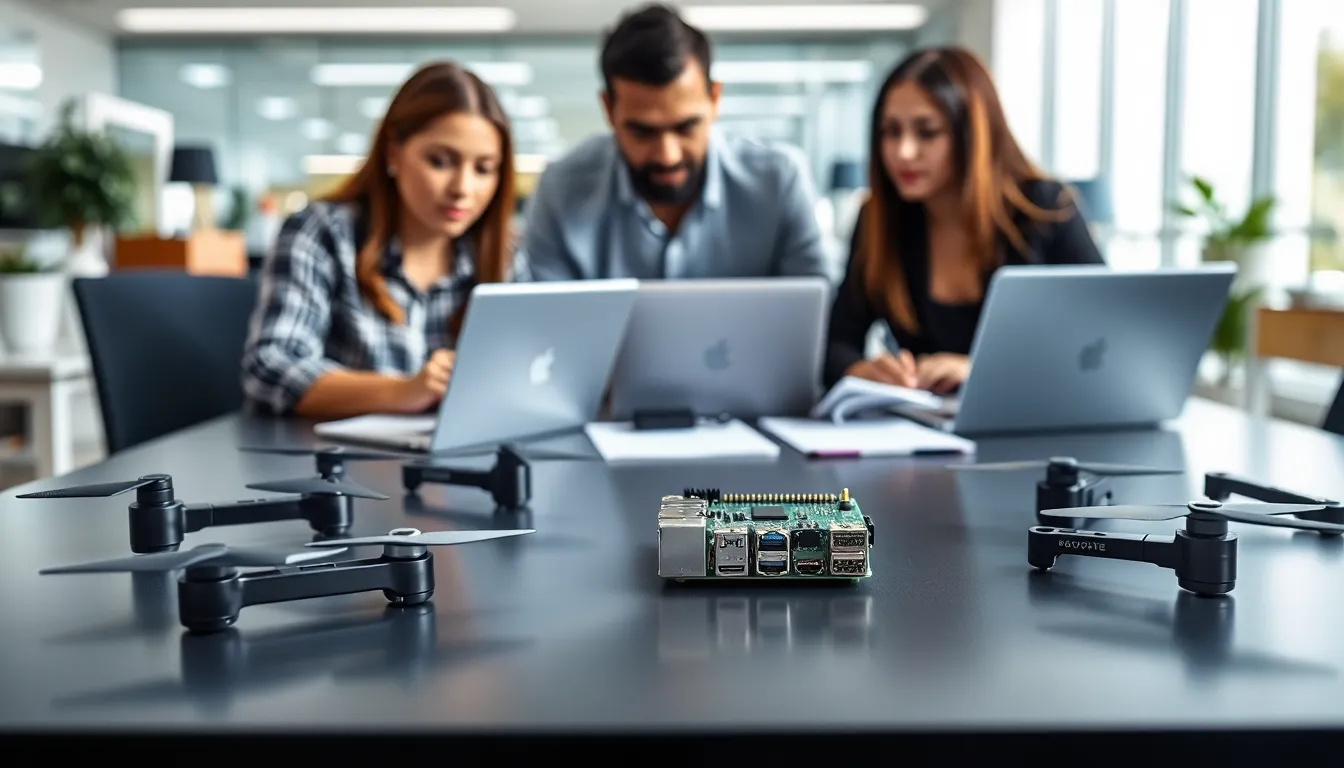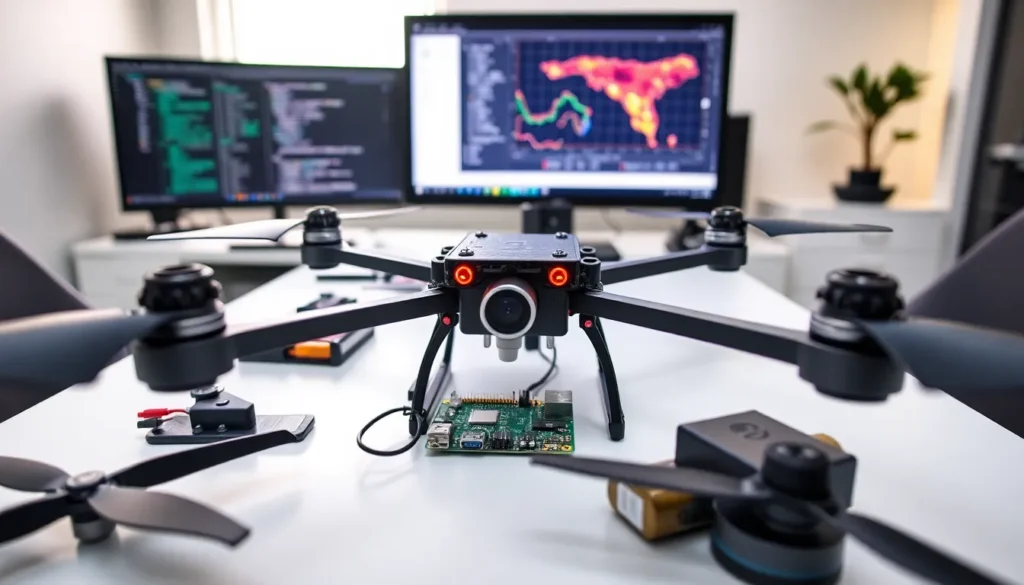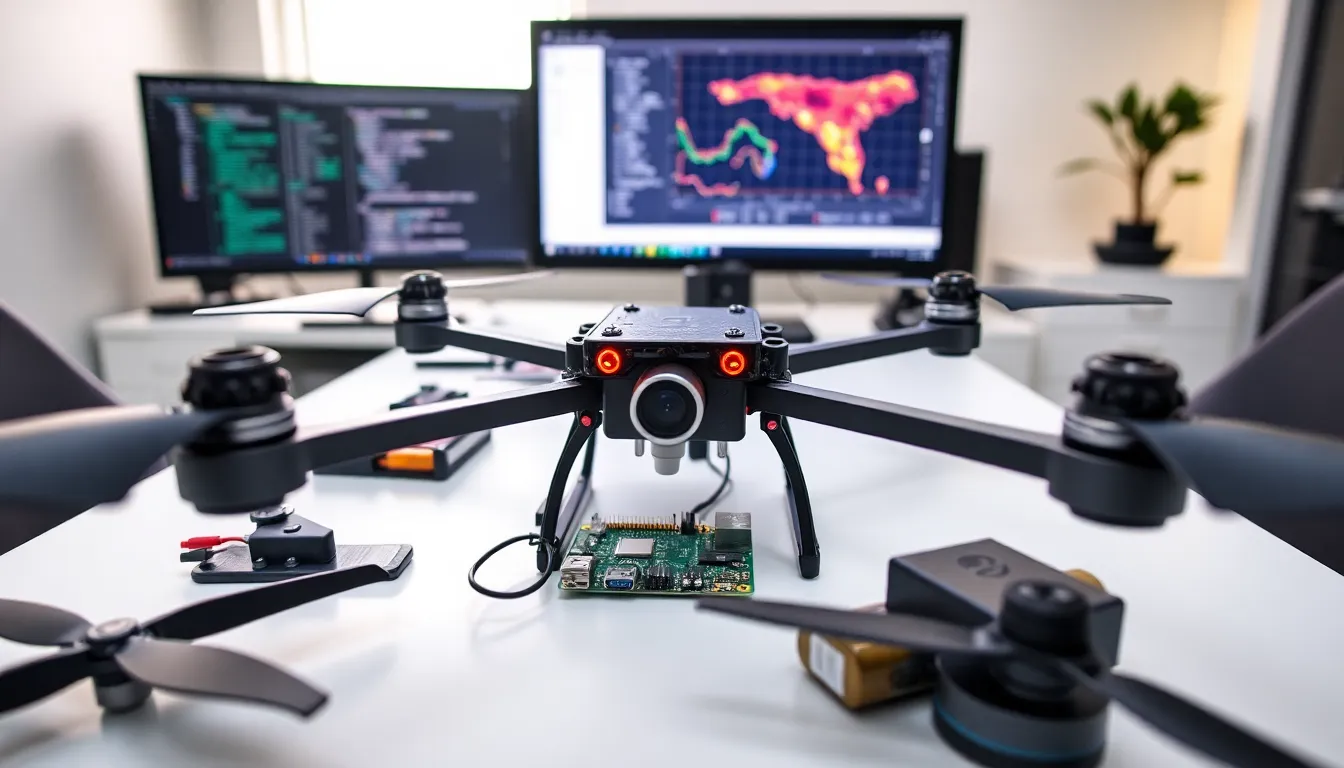Ever wondered how a Raspberry Pi Zero can transform your drone into a high-tech marvel? Welcome to the world of thermal drones, where innovation meets adventure. Think about it: one small board, endless possibilities. It’s not just a project: it’s more like a ticket to a new realm of aerial exploration. Buckle up, because we’re about to jump into the nuts and bolts of creating your very own Raspberry Pi Zero thermal drone. Whether you’re a tech enthusiast or just love flying gadgets, this is your moment.
Table of Contents
ToggleUnderstanding Raspberry Pi Zero and Its Capabilities

The Raspberry Pi Zero is a credit-card-sized computer that packs a punch. Developed as an affordable option for hobbyists and developers, it’s a compact powerhouse that can bring your projects to life.
Key Features of the Raspberry Pi Zero
Firstly, its low cost is a game-changer. Retailing for around five dollars, it allows tech-savvy individuals to tinker without very costly. The standout features include a 1 GHz single-core CPU, 512MB RAM, and a variety of ports for connectivity, including mini HDMI and USB on-the-go. These capabilities mean the Raspberry Pi Zero can handle various tasks, from simple programming to more complex operations required in drone technologies.
Applications in Drone Technology
In the realm of drones, the Raspberry Pi Zero shines brightly. Its compact size and lightweight nature make it ideal for integration into UAVs, especially where space is at a premium.
Integrating Thermal Imaging with Raspberry Pi Zero
One of the most exciting applications is thermal imaging. By attaching a thermal camera to the Raspberry Pi Zero, drone enthusiasts can capture heat signatures from above, opening up possibilities for search and rescue operations, wildlife observation, and even real estate inspections. Imagine surveying large fields or forests without ever leaving the comfort of your home.
Benefits of Using Thermal Drones
Thermal drones equipped with Raspberry Pi Zero offer ample advantages, particularly for those in various industries.
Designing Your Own Raspberry Pi Zero Thermal Drone
Creating a thermal drone not only enhances understanding of technology but also gives users the ability to tailor their drones to specific needs. Whether for agricultural assessments or thermal audits in construction, personalizing the design ensures that every flight is purposeful.
Necessary Components and Tools
Before diving in, you’ll need some essential components. A thermal camera module, a compatible battery, propellers, and a frame are crucial. Don’t forget about a flight controller compatible with the Raspberry Pi. A couple of tools for assembly, such as screws and a soldering iron, will round out your kit.
Step-by-Step Assembly Guide
Assembling your Raspberry Pi Zero thermal drone can be an exhilarating journey. Following a clear guide is key to achieving success.
Software Requirements and Configuration
Start by installing an operating system on your Raspberry Pi. Raspbian is a popular choice that includes all the necessary libraries for your thermal camera. Following installation, configure the interfaces and ensure the latest firmware is installed. Don’t skip this step: it’ll save you plenty of headaches later.
Programming the Drone for Flight
Once the hardware assembles perfectly, it’s time for programming. Your Raspberry Pi will need some specific scripts to manage flight controls and the thermal camera functionality.
Consider using Python or C++. Both languages have extensive libraries and examples tailored for Raspberry Pi, making it easier to carry out your drone’s features and functionalities.
Troubleshooting Common Issues
Even the most meticulously assembled drones might encounter hiccups during flight. A few common issues include overheating, unstable flight, or malfunctioning thermal cameras.
While troubleshooting, remember to check your power supply first. An inadequate power source often leads to unexpected shutdowns. Also, ensure that all connections are secure. This simple step can often resolve connectivity problems.
Future of Raspberry Pi Drones in Various Industries
The potential for Raspberry Pi drones extends far beyond personal projects. Businesses are already leveraging drone technology for everything from agricultural monitoring to pipeline inspections.
The fusion of Raspberry Pi technology with drone capabilities is a trend that’s here to stay. As these devices continue to evolve, we can expect more industries to adopt them for various applications.





